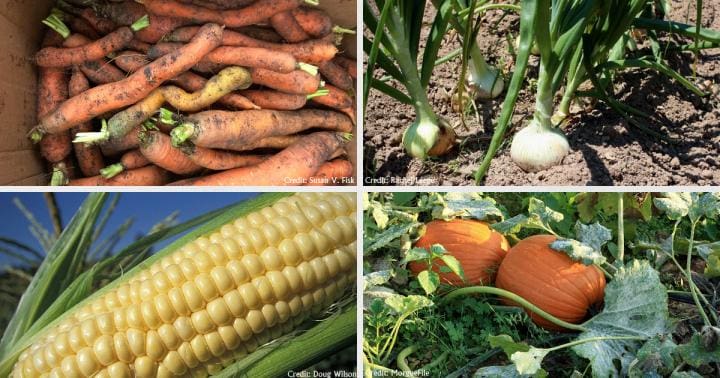When Hennig Brandt discovered the element phosphorus in 1669, it was a mistake. He was really looking for gold.
But his mistake was a very important scientific discovery. What Brandt couldn’t have realized was the importance of phosphorus to the future of farming.
Phosphorus is one of the necessary ingredients for healthy crop growth and yields.
 When farms were smaller and self-sufficient, farmers harvested their crops, and nutrients rarely left the farm.
When farms were smaller and self-sufficient, farmers harvested their crops, and nutrients rarely left the farm.
The family or animals consumed the food, and the farmer could spread manure from their animals onto the soil to rebuild nutrients. This was a fairly closed-loop phosphorus cycle.
But, as the world’s population increased, so did food and nutrition needs.
More of a farmer’s harvest, and therefore nutrients, was sold off the farm.
Agriculture adapted by developing many new growing methods, as well as fertilisers.
Most phosphorus fertilisers use the world’s supply of phosphate rock as a main ingredient.
That main modern source is a finite resource and it’s running out. Phosphate rock is also hard to mine and process.
“There is an urgent need to increase phosphorus use efficiency in agroecosystems,” Agriculture and Agri-Food Canada research scientist, Kimberley Schneider, said.
“There are many chemical, physical and biological processes that affect the availability of phosphorus to crops.”
This is why farmers place great importance in having enough phosphorus for their crops.
Crop breeding and cultivar selection
Different plants can use phosphorus more efficiently than others.
“Phosphorus use efficiency is the ability to yield more crop per unit of phosphorus taken up by the plant,” Schneider said.
“There is potential for crop breeders to develop new varieties that use phosphorus in even more efficient ways. They can also breed crops that work with mycorrhizal fungi in the soil to help increase their phosphorus absorption. Focusing on breeding plants that work well in low phosphorus soils will take an interdisciplinary approach.”
Cropping system design and phosphorus use efficiency
Since some crops can increase soil phosphorus availability for future crops, growers could focus on crop rotations that take advantage of this.
Cover crops and green manures can also contribute to phosphorus availability in many conditions.
For example, one study found sorghum did well with phosphorus use after alfalfa or red clover, but not after sweet clover.
Getting the right combinations for the right crops and fields will be important.
Soil organic matter’s role in mineralising phosphorus
Soil organic matter is known to indicate soil health. It can improve plant phosphorus availability by allowing for greater root access to phosphorus and by releasing plant available phosphorus.
Currently, soil organic matter is not part of the soil fertility measurements on farms, so this is an area of future research potential.
Naturally occurring soil fungi to the rescue
Many soils contain one or more types of friendly fungus called arbuscular mycorrhizal fungi.
They work with plant roots to exchange “life chores.”
The fungi help free up phosphorus and other nutrients, while the plants make sugar compounds that the fungi use for growth.
Of course, the fungi and roots must be able to be near one another for this exchange to happen.
Researchers are looking at the promise of building up and better utilising mycorrhizal fungi populations in soils.
Recycling and recovering phosphorus
Phosphorus is the 6th most common element on earth. Yet, it is a limiting factor in crop yields.
Excess phosphorus in the wrong place – streams, lakes and other waterbodies – causes pollution.
How did this come to be?
Let’s trace the “life cycle” of a phosphorus molecule.
Most phosphate rock is mined on the continents of Europe and Africa, although some deposits are available elsewhere.
After it is made into fertiliser, this phosphorus is then moved to farms.
From there, the phosphorus is used by a plant to make a product, perhaps a soybean.
The soybean is removed from the farm and manufactured into tofu.
It is then transported to your local grocery store, where you buy it and bring it home.
If you live in a city, after you enjoy your meal of fried tofu, the waste your body produces flushes down the toilet. If you live in a rural area, it goes into the septic system.
Thus, the life cycle of this illustrative phosphorus molecule shows a broken cycle.
The molecule originates far away from its final resting place.
Because of modern day life, the phosphorus cycle that used to exist on farms is broken.
The more urban society becomes, the more broken the phosphorus cycle is – unless scientists come up with answers to close the loops again.
Agricultural scientists are working with wastewater managers to develop ways to put those deserving phosphorus molecules back to work on the farm.
“While most currently available phosphorus recovery technologies may not seem economically viable, the environmental and social benefits are important,” Schneider said.
“There are also other valuable products of phosphorus recovery, such as organic matter, other nutrients, and even water.
“Increasing phosphorus use efficiency in agroecosystems must be a priority to reduce reliance on fertiliser and to minimise the effects on the environment.
“There are many possibilities for the agricultural system to improve the use of phosphorus. The outcome will be an agroecosystem that still feeds the world, while protecting the natural resources that help us grow our food and live healthy lives.”
Source: American Society of Agronomy
This article was recently published in a special section in the Journal of Environmental Quality called Celebrating the 350th Anniversary of Discovering Phosphorus–For Better or Worse.
Five blogs with further information:
- The discovery and general uses of phosphorus
- Why is phosphorus needed on farms
- What are sources of phosphorus for crops
- What are the challenges regarding phosphorus use
- Ten things we can do to manage phosphorus better

HAVE YOUR SAY